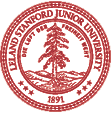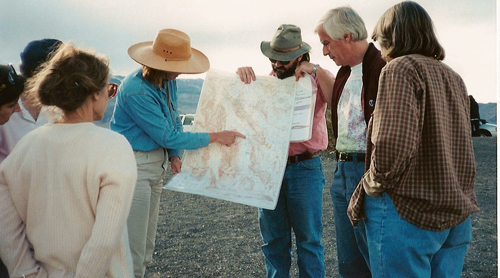








Stanford's Campaign for Undergraduate Education
“I just got back from a field trip over spring break, a freshman
seminar to Death Valley. We had a dust storm the first two nights and
all the tents blew down—there’s sand and dust in your food.
I love this stuff. It's a bonding experience for the students. And it’s
the first time they’ve seen professors get dirty.
“My own research is on volcanoes and on trying to understand where
the molten rock comes from in the Earth and how that triggers eruptions.
I actually get more excited about teaching people that I think are not
going to be prominent in my field—after all, there are not that
many jobs to study volcanoes. Many of our students go on to become lawyers,
captains of industry, active in government, and those are the people that
I want to know something about the Earth. I also want them to understand
something about scientific reasoning and the nature of scientific evidence.

Gail teaching in the field, in this case to campaign
leader and former President Gerhard Casper, his wife, Professor Regina
Casper, and Board of Trustee member Susan Orr. (Photo by Lynn Orr)
“I enjoy teaching freshmen and sophomores because they don’t believe they have to be cool, so they still show their enthusiasm for learning. My favorite form of teaching is to take students out in the field. For our field trip to Mount Lassen, each student in my Sophomore College class prepared a guidebook article and a presentation to give on the outcrop on some specific topic on the volcano. The quality of the students that you’re interacting with—you really can’t beat that. It is extraordinary what these kids can do when you have high expectations for them.”
“Coming from a family where nobody graduated from college before, and being a woman, I’ve found Stanford very welcoming. I resonate with the original mission of the Stanfords, which was to educate both men and women and make them useful citizens. Stanford has always had this engagement with the real world that made me feel comfortable here.”
“In the last few years, we’ve allowed an even wider range of faculty to be involved in teaching undergraduates. And this, I think, plays to Stanford’s natural strength: putting together world-class researchers with very, very smart students.”
To view a related video about undergraduate education at Stanford University, in which Professor Mahood appears briefly, click here.